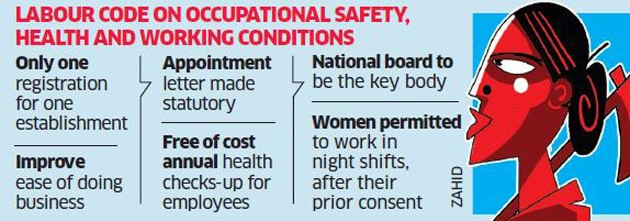7667766266
enquiry@shankarias.in
Why in news?
The Occupational Safety, Health and Working Conditions Code, 2019 was introduced in Lok Sabha.
What is the Code for?

What are the key provisions?
Source: PRS India, PIB